Back in July, we discussed “Six Common Tomato Problems.” Among those maladies were abiotic disorders (problems that are caused by factors such as weather, soils, chemicals, mechanical injuries, or cultural practices; and, not caused by insects or disease). Tomato abiotic disorders include blossom end rot, fruit cracking, leaf rolling, solar yellowing, sunburn, and tomato flower drop…all related to weather or watering issues.
In that column, I mentioned we would tackle an annual tomato-related issue, tomato worms, in a future edition. Well, here it is, in the podcast, above. America’s Favorite Retired College Horticulture Professor, Debbie Flower, waxes rhapsodic about the three “worms” (caterpillars, really) that can damage your tomato plants: Tomato/Tobacco hornworm, tomato fruit worm, and tomato pinworm, along with the moths that laid those eggs. She reassures us that nature has supplied us with plenty of “good guys” to help control these munchers and burrowers. Links that are listed in the notes for that podcast include: descriptions of tomato hornworm, fruit worm, and pinworm; and two posts from the Farmer Fred Rant blog, “Plants that Attract Beneficial Insects”; and, “The Good Bug Hotel”.
Today’s Beyond the Garden Basics newsletter tackles another abiotic disorder: tomatoes that are slow to ripen because of heat spikes this summer. And who hasn’t suffered through that this year? (Put your hand down, San Francisco.)
Why Are My Tomatoes Slow to Ripen?
From the garden e-mail bag, Vinnie asks: “My tomatoes are very slow to turn from orange to red, and several have yellowing as my bushes are not as leafy as I would like. They also are rather firm, though the plants have done well up to this point, with a decent amount of fruit as well as setting new tomatoes higher up on the plant. My “Sweet Million” cherry tomatoes also are having difficulty turning red, the same with the “Early Girl” and “Champion” full-size tomatoes. I planted the tomatoes in mid-April. They only get about six to eight hours of direct sun, depending on the season. But it seems I’ve had tomatoes for weeks at the same state of not turning fully red in color, so I was a little curious and disappointed in that. The plants are healthy, but not very bushy.”
You are not alone, Vinnie. Many area gardeners are wondering about the lack of color of their tomatoes now, in late summer. Blame the triple-digit heat spikes that have occurred coast to coast for the slowdown this summer.
Researchers from across the country have studied the effect of excess heat on ripening tomatoes. Their consensus: don’t worry, be happy. Those tomatoes will still be edible. And if you want to speed up the ripening process, harvest those tomatoes that are beginning to show color before the next forecast triple digit heatwave hits. Let them ripen indoors, in a dark place on the kitchen counter.
However, too much shade or lack of foliage on outdoor plants can also impede ripening tomatoes.
The University of California’s Contra Costa County Master Gardeners Newsletter says:
“A key resource that tomatoes need for ripening is plenty of leaf surface for photosynthesis. Often by late summer, some of the leaves on the tomato have started to dry up and wither and are no longer helping to nourish the plant. The plant is less vigorous than it was earlier in the season, so it takes longer for the green tomatoes to ripen. If you've run out of patience with slow ripening tomatoes, one thing you can do to speed up ripening is to remove some of the green tomatoes. Then the tomato plant can put all its energy into ripening the tomatoes that remain on the plant.
“Soil temperatures are also important. For optimal growth, tomatoes need soil temperatures that are less than 80 degrees. Hot air temperatures raise the soil temperature. Containers may be particularly vulnerable to soil temperature rise if they sit in the hot afternoon sun. Mulching can help keep soil temperatures lower. Also, if your tomatoes are hit by afternoon sunshine, you might consider erecting some shade barriers to keep the sun off the containers.
“If you've run out of patience with slow ripening tomatoes, one thing you can do to speed up ripening is to remove some of the green tomatoes. Then the tomato plant can put all its energy into ripening the tomatoes that remain on the plant. You can ripen the green tomatoes you remove on your kitchen counter. They won't be as yummy as the ones that ripen on the vine, but they're still better than store bought tomatoes.
”As a final caution, don't be tempted to fertilize the tomato plant thinking it will speed up production. Fertilizing now will probably just cause the tomato to go into a vegetative growth mode that is too late in the season to be helpful.”
Kansas State University chimes in:
“Tomato color can also be affected by heat. When temperatures rise above 95 degrees, red pigments don’t form properly, though the orange and yellow pigments do. This results in orange fruit. It doesn’t affect the edibility of the tomato, but often gardeners want that deep, red color back.”
The report goes on to state that high heat also will cause poor fruit to set, especially on slicer tomatoes.
“Cherry tomatoes seem to be more heat tolerant,” Kansas State Horticulturist Ward Upham said. “But for slicers, high temperatures seem to interfere with pollen viability or can cause excessive style growth, leading to a lack of pollination. Tomatoes that have already formed (before excessive heat) are not affected.”
The “style” of a flower is the stem inside the flower that is part of the pistil. This question will not be on the Final.
Upham said it takes about three weeks for tomato flowers to develop into fruit that is about the size of a golf ball. After that, growth is usually more rapid over the following three to six weeks, and then just a few more days to change color.

“Though there are ‘heat-set’ slicing tomato varieties that will set fruit at higher temperatures, that difference is normally only two to three degrees,” Upham said. “Once cooler temperatures arrive, tomato flowers will resume setting fruit.”
Cornell University says not to worry about letting those harvested, not-quite-red tomatoes sit in a dark, cool place indoors:
“Light conditions have very little to do with ripening. Tomatoes do not require light to ripen and in fact, fruit exposed to direct sunlight will heat to levels that inhibit pigment synthesis. If temperatures remain high outdoors, these picked fruit will ripen more quickly, perhaps by as much as five days. As far as flavor, the greener fruit should develop flavor and color like what you would get if field ripened. The key is picking them when they are showing the first signs of ripening (no earlier) and keeping them at room temperature. Do not refrigerate, as this will absolutely destroy their flavor. Outside, direct sun can also lead to sunscald of fruit. Because of that, do not remove plant leaves to help ripen the fruit. Also, soil fertility doesn't play much of a role. We do know that high levels of magnesium and low levels of potassium can lead to conditions like blotchy or uneven ripening or yellow shoulder disorder. But the slowness to ripen is not likely due to soil conditions. Adding additional fertilizer will do nothing to quicken ripening.”

Remember, too: we have a long tomato growing season here in USDA Zone 9. Fresh garden tomatoes are not uncommon in our area on Thanksgiving; some gardeners here have even reported Christmas tomatoes (yes, they were cherry tomatoes, but you wouldn’t want to see what the plant looks like on Dec. 25). Don’t worry. Be happy!
Thanks for reading Beyond Basics: The Garden Basics with Farmer Fred Newsletter! Subscribe for free to receive new posts and support my work.
Thank you for also listening to the Garden Basics with Farmer Fred podcast! It’s available wherever you get your podcasts. Please share it with your garden friends.
Fred Hoffman is also a University of California Cooperative Extension Master Gardener in Sacramento County. And he likes to ride his bike(s).

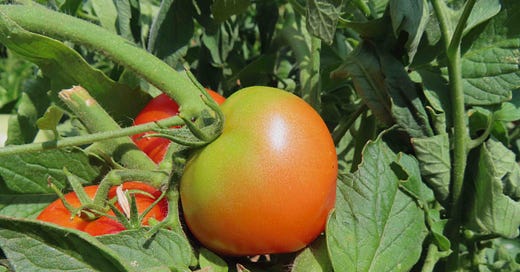






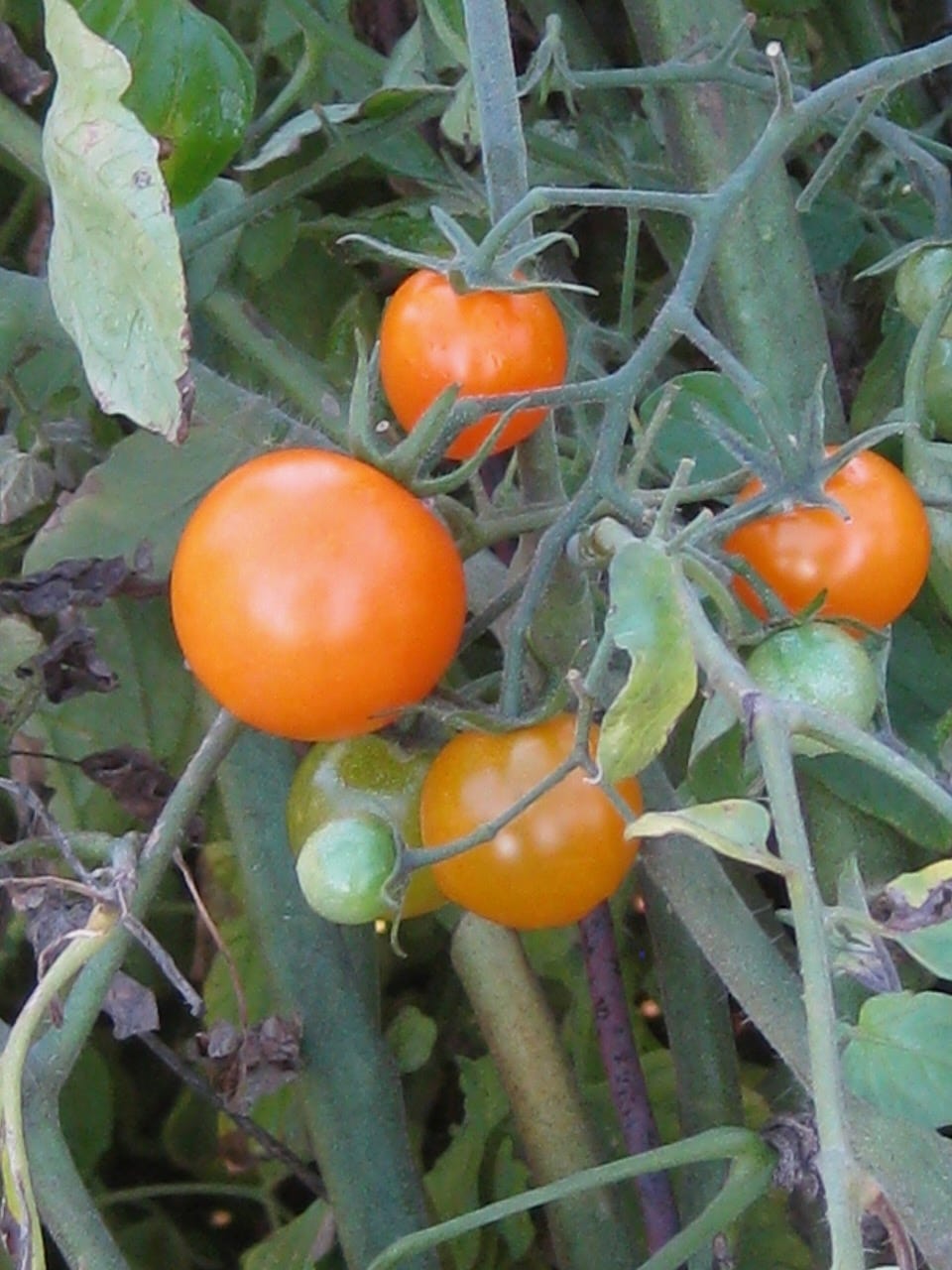



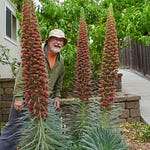

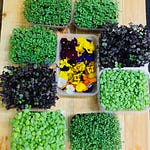
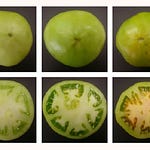

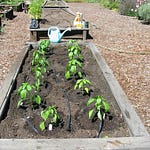
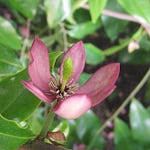
Share this post